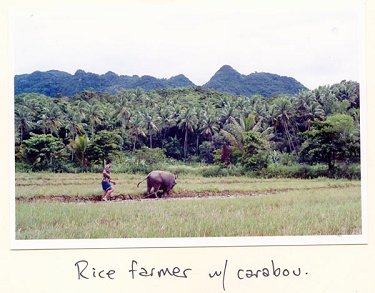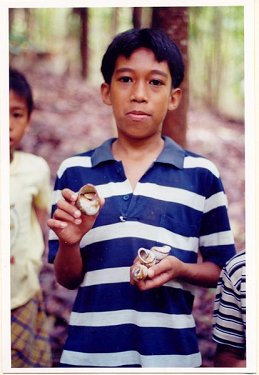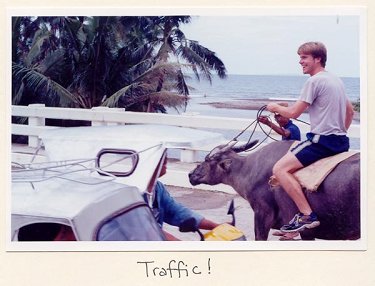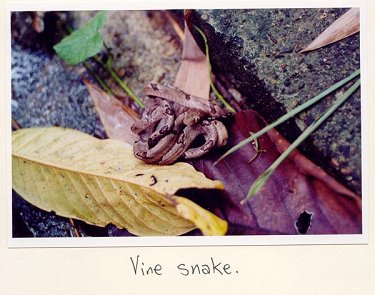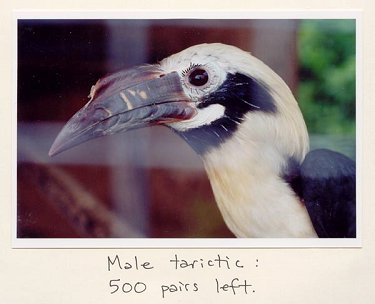|
|
Callan Bentley Philippines |
|
Cubay
Arrival at Kalibo
The next morning, we flew from Ninoy Aquino International Airport’s domestic terminal south to Panay. Our flight would take us into the town of Kalibo. We passed over the Sibuyan Sea, which got visibly more blue the further we flew away from Manila. I strained to see the plume of smoke from an erupting volcano. The Philippine archipelago has a pocky topography resulting from an intense volcanic and seismic history. There are 37 known volcanoes in the Philippines, but only this one had been erupting in the past couple of days. I couldn’t see it: too much cloud cover over the highlands. Low islands were more easily seen, fringed in yellow sand and coral reefs.
Our destination, the island of Panay, was also clear. As we made the approach to the Kalibo runway, I was pleased to see a different countenance to this island, as compared to the rank urbanity we had just left. There were sinuous rivers full of V-shaped fish traps. Amid clearings in the palm forest, I glimpsed rice paddies gleaming with reflected sky. Panay is shaped like a cat head, point chin in the south, and point ears sticking out in the north. We were landing on one of the pointy ears – the Northwest Panay peninsula. The airport in Kalibo was on one side, and Noah’s site, Pandan, was on the other side of the peninsula. We took a trike ride from the airport to Kalibo proper. A trike is a motorcycle with a tall, roofed sidecar welded to it. They have no seatbelts, no doors, and no cushions on the seats. Decorated in a style indicating that they would be jeepneys if they could, these trikes routinely carried up to eight people. They would be crammed into the sidecar and riding on the motorcycle behind the driver, up to three deep. Like any third-world den of squalor, Kalibo had a petrol fume/human excrement stink to it. The town was drier than Manila, but with much more exhaust and dirt in the air. I was glad when Noah arranged a ride on top of transport bus to Pandan, his village. Riding on top of that vehicle was an experience I will never forget. At first, I was thrilled by the air, the views of paddies, and bamboo and palms. Farmers were threshing rice by hand, drying rice on the street, planting new rice behind a plow pulled by a carabou, the ox of the Philippines. As we rode, I gripped tie-lines that held in place a half-ton of luggage and supplies. These sacks and boxes were lashed to the roof of the bus, and Noah and I and five other men were clinging on top of it all. Soon a few drops of rain began to fall, and the temperature cooled noticeably. There was a gray wall of clouds ahead of us, and it looked like thunderstorms to me. Noah shouted something to me that I couldn’t quite make out: it sounded like he said “typhoon.” The raindrops increased infrequency and decreased in temperature. I put on a pair of sunglasses to protect eyes, in spite of my giddy desire to see as much as possible.
Transport on Panay
Two days before I had been back in America, packing up my classroom, getting coffee with my girlfriend, and now I was here. Surreal, I thought, gripping the wet guy-lines, atop a bus, hurtling down a mud road on a minor island in the Philippines, rain lashing my face. We rigged up a tarp to protect us from the cold rain, and in the lee of its shelter, we made it comfortably to Pandan.
Pandan Dismounting from the bus, we walk a few steps into the BioCon office. This is the organization that Noah works for. They have as their goals the preservation of the forested interior of the northwest Panay peninsula, and in particular, saving the two endangered species of hornbills that live there. Hornbills are large rainforest birds, similar in appearance to toucans. They are bulky, noisy fruit-eaters, and they have been hunted close to extinction by those who covet their feathers and meat. Four other Americans live in Pandan, working for BioCon. Two are PCVs like Noah, Jesse and Tasha. The other two are Noah’s boss and his wife, Eric and Jill, both on the verge of leaving the Philippines. They are due to move out in less than a week. When they leave, Noah will move into their house. In the meantime, he tells me, we will stay with his host family in a small village ten miles further up the coast. I also meet Fel, Noah’s counterpart in the organization, a native of Panay well versed in conservation theory. We all go to lunch at an open-air café and store. I order soup with a fish head floating in it. My own Peace Corps experiences interest them, and we talk about Mongolia. There are flies everywhere, landing on my food, on my skin, on the table and walls. As we eat, a fierce downpour begins. We are protected by a roof, but the rain seems to drive all the mosquitoes inside too, joining the flies. I alternate between eating and swatting at them. I’m a little bit worried about malaria, because I am not taking any preventative medicine. I elected not to, since Noah told me that malaria wasn’t present in this part of the island, and that he himself chooses not to take the Peace Corps-issued prophylaxis. Noah in fact takes a cavalier approach to disease and sanitation. I blanched when went to the back of the café to wash hands and urinate in their little pit toilet: everything was slimy, dark, and to my American eyes, festering with germs. After the meal, the rain has stopped, though the main street in Pandan is flooded by six inches of water. Noah again demonstrates his comfort with low levels of sanitation by wading on through. I wait for him to fetch the Jeep and come back to get me. The Jeep is property of the BioCon organization, but Noah uses it for errands. It is not however, called a “Jeep.” I suppose this is to distinguish it from the jeepneys, but they call this one the “Owner-type.” We travel north in the Owner-type on the main road. It is dirt. Our destination is Noah’s host family, in the small village of Cubay. Everywhere, there are chickens and dogs. School has just let out for the afternoon, and uniformed children are walking home in haphazard phalanxes of black and white. As he drives (taboo to Peace Corps), Noah demonstrates Filipino reliance on horns, beeping almost constantly, emitting a sort of early warning sonar, especially when rounding sharp curves. Along the way, Noah suddenly brakes and tells me, “That’s my dog.” A medium-sized mutt with a plumed tail spots the familiar red Owner-type, and runs towards us. He leaps up into Noah’s lap. This is Pawikan, named the Kinaraya word for sea-turtle. We drive Pawikan up to Cubay with us.
Hosts and Birds
In Cubay, I meet Lolo and Lola, Noah’s host family. They are old, gray but stringy and compact. They feel like grandparents to me. Lola fixes up a nice meal, bananas and fish. Rice is the staple of the Philippine diet, as it is for much of the Orient. I’m not used to consuming so much of it, though, and this meal is the first of what will be way too much. After dinner, Noah and I take a walk to the beach. It’s about thirty meters from Lolo and Lola’s house. Standing on the shore, surrounded by trees and quiet, seashells underfoot, I feel like I am finally here. This is what I had imagined the Philippines would be like: nature, forest, sea, peace. I inhale with contentment. We walk to the nearby Bulanao river, another quarter-mile distant. En route, we run into a friendly drunk who wants to drink tuba (fermented coconut juice) with us, though we defer. We cross the Bulanao River and Noah tells me how the current runs both ways, depending on the tides. This is pure poetry, it seems to me: a river that runs both ways! What a metaphor for the life of a Peace Corps Volunteer.
Back at Lolo and Lola’s house, I am ready for sleep. The adjustment to my circadian rhythms is still in flux. Again, I wake up early, and from my bed, I can look out the window at the tropical sunrise. Bats and birds are dark in the lightening sky. I look out from my pillow onto the Jungle. Mango, papaya, banana, coconut trees grow in every direction. The papaya, in particular, impress me: they grow wild like weeds. Breakfast follows, more fine Mindanao coffee. After we have eaten, we walk back to Bulanao for the hornbill feeding. Another BioCon coworker, Nestor, lives in Bulanao, the village adjacent to Cubay, even smaller than its neighbor. Nestor maintains several captive birds in a set of cages there. We join him and Fel there, and I take photos of the birds. There are two species of hornbills that are of particular concern to the staff of BioCon. Both have long, scimitar-like beaks, decorated on top with a vertical ridge that meshes with the skull. The first, and less endangered species, is a medium-sized hornbill, decorated in a decisive pattern of contrasting black and white. This is the tarictic hornbill, Penelopedes panini. About 500 pairs of them remain in the wild. The other is a massive bird, much more gaudy in appearance due to a bright red bill and canary-yellow facial skin, and an orange neck. This is the Visayan writhe-billed hornbill, Aceros waldeni, but no one calls them by that name. The native Kinaraya term is easier to say: dulungan. Dulungans are extremely imperiled: only 60 pairs remain in the wild. When I say “the wild,” I mean “ the world”: they only live on this one island, and they are going fast. There were five new tarictics held captive in the cages that morning. Nestor and Fel told us how the birds had been confiscated by the police in a raid, elsewhere on the island earlier in the week. The police had turned them over to BioCon for safe-keeping. Also present were a changeable hawk (what does it change into?) and a spotted dove, (elegant and timid).
Rumnick and Rene
On our way back from the bird cages, through the two tiny villages, we were obligated by the mores of Filipino culture to do a lot of visiting in peoples’ houses. This aspect of our day, these polite social calls reminded me of Mongolia. Actually, it occurred to me that in spite of the humidity, fruit, ocean and jungle, there was a great deal that reminded me of my own Peace Corps experiences in Mongolia. The sketchy airplanes, the bland food, the dark skin and short stature of the people, the foreign tongue, the prominence given to chintzy decorations in households, the smell of diesel and woodsmoke, the overloaded vehicles lumbering down the ad hoc dirt road.
Life in Cubay There was a sweet rural simplicity to the several days that I spent in Cubay. There wasn’t anything loud or offensive, no need for me to feel anything other than contentment at slipping so easily into small-town life on an island far from home. Lolo and Lola accepted me into their house, and I felt comfortable there in almost every respect. We ate bananas off the trees in their yard: short fat bananas that smelled like oranges, with fragrant meaty flesh inside. For meals, Noah and I would alternate cooking with Lola, and we sat down together at a formal meal, eating with our spoons only, slurping fish and fruits and onion and rice. I slept with open windows, learning day by day to accept the mosquitoes. I enjoyed the night air, aware that I was sharing it with ten-pound bats and all manner of winged insects. There were two boys in the neighborhood who had befriended Noah, Rene and Rumnick. They were welcome company on our sorties in the forest and along the beach. Neither spoke English, but evidently they were interested enough in us to persist in trying to explain their home and show us new oddities of Panay nature. One day they showed me how to find hermit crabs in the forest. On a walk through a teak plantation, Rene held up a crab, a little bundle of claws and antennae, folded up inside a swirled snail-shell. The crabs fascinated me: I had not been able to see them at all until Rene and Rumnick pointed them out. Suddenly I became aware that at the base of almost every tree there were several crabs clustered in their candy-striped shells. On another afternoon, I woke from a nap to see Rene in the tree outside my second-story window. He was gathering tart Indian mangos. When he picked one, he put it in a net with a long handle. I peered down, and at the other end of the handle was Rumnick, grinning up at me. Inspired, I climbed out on the roof and reached out to grab a few fruits myself. They brought their harvest upstairs with a can of crystal salt. The technique to eating the Indian mango was to press chunks of salt into its green interior, and then suck on the juice. The flesh of these mangos was tougher than their yellow cousins, and far more bitter. The salt mollified the bitterness, but it was the experience of sitting on the roof with these two kids that was truly sweet.
Riding the Carabou
Rene had a puppy with big teal eyes. It was a fat little dog, very friendly and curious. It was cute enough that Lolo and Lola had allowed it the run of their house. Noah had been asked to name the dog, and he chose the same Palutan, the Tagalog word for the salted meat snacks that are served with alcoholic beverages. Rene went with the name out of deference to Noah, but later told him that originally, palutan snacks often are salted dog meat.
One day, nothing much was happening, and Lolo suggested that I go for a ride on his carabou. The carabou is the beast of burden in the Philippine islands. It is an Asian ox, with long horns and a dripping nose. I had not seen anyone else riding a carabou, though Lolo assured me that it was an acceptable use of the animal. He grabbed a rice sack and we walked out to his mahogany grove. The carabou was tethered there, chewing a wad of vegetation. I stood by with my camera as Lolo washed the carabou in a stream, splashing it and talking softly to it. Once mounted, I realized how uncommon it actually was for a person to ride a carabou – essentially, it’s riding a cow, which would earn you a stare in America. Add to that the fact that I was already an object of curiosity as a white man in a brown village, and you can imagine how many heads turned as I directed the animal down the dirt road. We soon had a sizeable entourage of laughing children, and I began to feel a bit ridiculous. The carabou is not a tall animal; my feet were only a few inches from dragging in the dirt. After dismounting, mud clung to my legs. I wondered whether some choice parasites had made the jump from cow to rider. Noah and I went to the beach to take a swim, and the crowd of kids followed. We all played in the waves, careful to avoid the large sharp chunks of coral that littered the floor of the ocean. The kids were tough, and threw themselves headlong into the waves and into the beach-sand to amuse us. We collected some seashells, and swam down the beach to the river that runs both ways, and swam there too. Pawikan was nervous about swimming in the ocean, but he readily waded in to dog-paddle once we got to the river. After our carabou adventure, Lolo took me to meet his son who lived across the street. I was shocked to see the interior of his son’s house: it was really well decorated, clean, well lit, and almost Western looking. I was surprised that a person would live so much better than his parents: it seemed odd to me. His son spoke English well, and we had a nice talk as I was thinking how disproportionately more comfortably he lived. Another day, we took a hike in search of hornbills. We picked up Jesse the Peace Corps Volunteer, Bimbot the local veterinarian, and Pinoy the local hunter. Together, the five of us went to Malumpati, a small settlement at the end of the road weel inland. Malumpati is something of a spa, due to its river of turquoise water. This was cold water, flowing from caves hidden deep in the shade of the rainforest. It was a glacial blue, like paint, unreal in a setting so dominated by green. When I asked why the water was this teal color, I was told it had minerals dissolved in it. Pinoy led us off into the rainforest on a thin path. We hiked past an enormous hairy spider and a brown vine snake that was thin as a string but as long as my arm. We waded across tributary streams, all “normal” water color, which is to say, clear. Eventually we crossed over the river on a bridge of bamboo. A trio of children in shorts was squatting on the bridge, spear-fishing for suckers.
Searching the Forest
The forest was rich in animal life. Every rotting log seemed home to two or three giant millipedes, fully seven inches in length. Butterflies cavorted in the open, sunny areas. We saw birds and rodents and large insects. Turning over a leaf, I found the underside studded in a convocation of disclike snails. There were crimson forest-crabs on the rock outcrops, scuttling into the pocked limestone like little moving flowers. On more exposed areas of rock, we found rubbery little mollusks, unlike any animal I have ever seen. Later, I found that they were locally known as “naked snails.” Pinoy picked up a nut that had been chewed on. He told us that a monkey had done it.
The object of our hike was to check on a known tarictic hornbill nest hole. These birds have a unique was of making a home and raising their young. First, they select an appropriately-sized hole in a tree. The hole should have a relatively small exterior entrance, but be cavernous inside. Once they find one, the mated female goes inside, and she seals herself in. Building a wall of mud and feces, she narrows the outside hole to a small slit. The male remains outside, where he must gather enough food to feed himself, his wife, and his child. Food is passed beak-tip to beak-tip through the tiny access hole, and the same hole is used when the female defecates: she shoots her waste out in pulses, and teaches the hatched baby to do the same. The nest hole that we were checking on today was unusual: it was located only two meters off the ground. Usually the birds nest much higher up, far from easy access to those who would conserve them. Unfortunately, while it was a simple matter to check on the birds, it would also be a simple matter for predators to get to the nest. On a previous check-up, Noah and Bimbot had found scratches from the claws of a monitor lizard leading up to the hole. They had installed a protective sheath of metal around the tree trunk, in the hopes that the carnivorous lizard would not be able to climb its slick surface. When we got to the tree after two hours of hiking, we had passed stands of bamboo as thick as my leg, small scraggly fields of corn growing on steep hillsides, and copses of coconut palms, with a sort of stepladder hacked into their trunks. Eventually, all these symptoms of human influence had grown less frequent, and we entered the virgin forest. The trees here were far larger, and more varied. No coconut, but gnarled rainforest giants like teak and XXXXXXXXX, with drippy trunks like melted candles. Some of the roots formed huge curtainlike buttresses. Both Noah and Jesse wore smiles. The surrounding jungle with its cavalcade of multiform green was their reason for being here, isolated from their own culture, for two years. “This is it,” Jesse told me. “This is the real forest.” Hornbill country. We found the nest hole, and it was empty. The mood changed. Concern clouded the faces of my companions. Noah, Bimbot, and the hunter all played detective, trying to puzzle out whether the birds had fledged naturally, or been eaten by the monitor lizard, or been poached. They inspected the grubs inside the hole, grubs eating the detritus left behind by the birds. Based on the size of the grubs, they were able to make a guess about how long the nest had been abandoned: any grubs present during the hornbills’ residency would have been consumed as an in-house snack. There were more claw-marks from the lizard, though it was difficult to say whether it had made it past the metal collar. Pinoy the hunter climbed the tree, to search topside for clues. He found a second entrance the nest hole. Ultimately, we gave up, had a snack, and hiked back down to Malumpati.
Beer at Boy's House
The way back, being downhill, was slippery and tough to negotiate. The three Americans all stumbled and fell several times. Each time I fell, more dirt and rotten leaves stuck to my sweaty skin. A swim in the blue Malumpati water was definitely next on my To Do list.
The water was cool and refreshing. It had quite a current, too, and I had to swim constantly in order to avoid being swept downstream. Noah and Jesse joined me in the water, but the Filipino men did not. We ate a lunch that was disproportionately satisfying to its apparent simplicity: canned tuna and crackers, and some bananas pulled off a nearby tree. One evening, Noah told me that he had met up with a friend of his on the road. His friend, named Boy, had been host to a party the previous evening, and was fortuitous enough to have a gaggle of San Miguels left in his “ref” (read: “refrigerator”). Boy had invited Noah and I over to help him polish off the stock of bottles, and have some dinner as well. We took the Ownertype, the little red jeep that Noah’s organization was letting him use. It felt a little bit decadent to be driving to dinner, given the setting. Most of the people on Pandan would never be able to afford such an extravagance. It also seemed to be a bit at odds with the Peace Corps profile. When I was serving in the Peace Corps in Mongolia, we weren’t even allowed to touch a motorcycle. Boy lives in Libertad, a town north on the coast of Panay. It represented the furthest north that I ventured up that side of the island. We passed the Libertad National Vocational School, where Noah and I had been coordinating a pen-pal exchange between my students and the local kids. Boy welcomed us in a manner both complimentary and relaxed. We left our shoes at the door and popped the caps off the first of many brown bottles of San Miguel. Boy’s wife Natty was at the dining table with two friends, preparing food. Boy and Noah and I sat in the living room, talking business and nature and culture. Before long, a comfortable buzz warmed the evening and the living room scene. We snacked on palutan: those salty snacks that are traditionally served to men when they are drinking. The palutan for the evening were: skewered pork strips and a broiled tropical fish, white with maroon edges to its scales. This fish was beautiful: it could easily have been the centerpiece of an American aquarium. (It probably would have been better there too: I found it entirely too bony to be palatable.) The porky kabobs, on the other hand, were just fine. I had renounced my vegetarianism for this trip, and this was why. Those skewers reminded me just how sublime carnivory can be. Boy was very articulate despite his lack of teeth, and he had a ready laugh for us, as well as a storehouse of knowledge on a variety of topics. We talked about herbal medicine and mining and Filipino history. Dinner remains a bit of a blur to me, though some more fish and a lot of rice were featured, and one of the shredded pickled “salads” that are so pervasive in Asia. On the ride back south, in the blackness of the coastal road, the stars were fierce overhead. The headlights picked out a fresh-water turtle crossing the road, and we stopped to examine it. Noah said it was the first one he had ever seen in the Philippines. Sea turtles up to a meter in length were relatively plentiful, but little sliders like this one are a rarity. In fact, Noah’s dog is named the Kinaraya name for “sea turtle,” Pawikan.
Life in Cubay
The days in Cubay passed in a relaxed routine of eating, cooking, swimming, sleeping, mosquitoes, fruit, and hikes. I lived the small details like everyone else. Standing in the kitchen making coffee, I was bitten by an ant, right between my toes. When the patter of rain began to sound on the roof, I ran outside to rescue my drying laundry off the line; the rest of the village was doing the same.
| ||||||||||||||||||||||||

